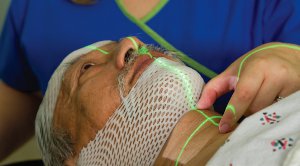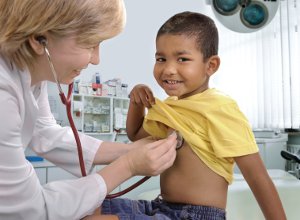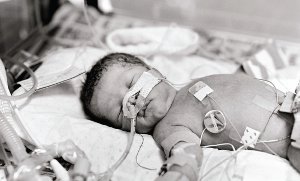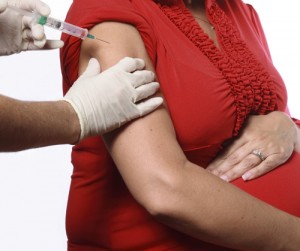
Aim: Indigenous Australian cancer patients have poorer outcomes than non-Indigenous cancer patients after adjusting for age, stage at diagnosis and cancer type. This is not exclusive to the Indigenous population of Australia. The aim of this review is to explore the reasons why Indigenous Australians face a higher cancer mortality rate when compared to their non-Indigenous counterparts. Methods: A literature search was conducted using PubMed and Medline to identify articles with quantitative research on the differing survival rates and cancer epidemiology, and qualitative data on postulated reasons for this discrepancy. Qualitative studies, non-systematic topic reviews, quality improvement projects and opinion pieces were also reviewed in this process, with the belief that they may hold key sources of Indigenous perspectives, but are undervalued in the scientific literature. Results: Although allcause cancer incidence is lower within Indigenous Australians, the probability of death was approximately 1.9 times higher than in non-Indigenous patients. Occurrence of cancer types differ slightly among the Indigenous population, with a higher incidence of smoking-related cancers such as oropharyngeal and lung cancers, and cancer amenable to screening such as cervical cancer. Indigenous patients generally have a later stage at diagnosis, and are less likely to receive curative treatment. This discrepancy has been attributed to health service delivery issues, low uptake of screening, preventative behaviours, communication barriers, socioeconomic status and non-biomedical beliefs about cancer. Conclusion: The implication of these findings on the future of Indigenous cancer care indicates the fundamental social, cultural and serviced-based change required for long-term sustainable improvement in reducing Indigenous mortality rates. To ‘close the gap’ we need to make further collaborative system changes based on Indigenous cultural preferences.
Introduction
Indigenous Australian cancer patients have much poorer outcomes than non-Indigenous cancer patients after adjusting for age, stage at diagnosis and cancer type. [1] Statistics from 2005 show that cancer was the third highest cause of death in Indigenous people, as for all Australians, causing 17% and 30% of all deaths respectively. [1,3] However after adjusting for age and sex, Indigenous people had a 50% higher cancer death rate. [4] Indigenous Australians have a higher incidence of rapidly-fatal cancers that are amenable to screening or are preventable, particularly lung and other smoking related cancers. [2] One of the major contributors to increased mortality is the advanced stage at cancer diagnosis. In addition to this, Indigenous people are less likely to receive adequate treatment. The aim of this review is to explore the reasons why Indigenous Australians face a higher cancer mortality rate when compared to their non-Indigenous counterparts. This review will display the epidemiology of cancer types and discuss the grounds for this discrepancy, including a focus on the causes for advanced stage at diagnosis, geographical distribution of the population, socioeconomic status, service delivery and cultural beliefs about cancer.
A literature search was conducted using PubMed and Medline to identify articles with quantitative research on the differing survival rates and cancer epidemiology, and qualitative data on postulated reasons for this discrepancy. Qualitative studies, non-systematic topic reviews, quality improvement projects and opinion pieces were also reviewed in this process, with the belief that they may hold key sources of Indigenous perspectives, but are undervalued in the scientific literature. Combinations of key words such as ‘Indigenous’, ‘cancer’, ‘incidence’, ‘mortality’, ‘non-Indigenous’, and ‘cultural beliefs’ were used, in addition to criteria limiting articles to those published after 2000 and within Australia, although some key international references were included.
Generally, Indigenous Australians have a life expectancy seventeen years younger than their non-Indigenous counterparts, and a burden of chronic disease 2.5 times higher. [5] This is not exclusive to the Indigenous population of Australia; similar findings have been shown for Indigenous people of Canada, New Zealand and the United States. [6,7,8] The Aboriginal and Torres Strait Islander people of Australia, who account for 2.4% of the total population, will be referred to as Indigenous people for the purpose of this review, [9] although their separate cultural entities are recognised.
Epidemiology
Indigenous people in the Northern Territory diagnosed with cancer between 1991 and 2000 were 1.9 times more likely to die than other Australians, after adjusting for cancer site, age and sex (Figure 1). [10] The prevalence of cancer types differed among the Indigenous population, with a higher incidence of, and mortality from, smokingrelated cancers such as oropharyngeal and lung cancers, and cancers amenable to screening, such as cervical and bowel cancer. [10,11] In addition, studies from New South Wales, the Northern Territory and Queensland have found that Indigenous people are more likely to have advanced disease at diagnosis for all cancers combined. [2,12,13] Notably, lung cancer is diagnosed earlier in Indigenous people; this is thought to be due to the high prevalence of lung conditions such as tuberculosis and chronic lung disease among the Indigenous population. [2] Statistics show that only 11% of Indigenous bowel cancer patients in the Northern Territory, compared to 32% of non- Indigenous patients, had an early diagnosis. This has potential for improvement through the use of faecal occult blood programs as a cost effective screening tool. [6] In addition to the late stage at diagnosis, the low rate of cancer survival in Indigenous patients can be, in part, attributed to the prevalence of high fatality cancers, treatmentlimi ting comorbidities and high uptake of palliative or non-aggressive treatment options. [2]
Studies from across a number of states in Australia have shown that Indigenous patients are less likely to undergo treatment. In a study reported by Hall et al. in Western Australia, 26 (9.5%) of 274 Indigenous lung cancer patients underwent surgery, as compared to 1693 (12.9%) of 13,103 non-Indigenous lung cancer patients, from 1982 to 2001. [16] In the same time period, one (1.5%) of 64 Indigenous prostate cancer patients, versus 1,787 (12.7%) of 12,123 non-Indigenous prostate cancer patients underwent surgery. The study concluded that the Indigenous population with prostate or lung cancer were less likely to undergo surgery than their non-Indigenous counterparts. [14] A Queensland study by Valery et al. also reported that Indigenous cancer patients were less likely to undergo surgical treatment. [9] This may partly be explained by advanced stage at diagnosis; however, the results are statistically significant, demonstrating under-treatment after this adjustment. Treatment choice and barriers to care were identified as important contributors to this discrepancy. [14]
Longitudinal trends from 1995 to 2005 in the Northern Territory reported a downward trend in all cancer incidence among the non- Indigenous people, as opposed to an increase in Indigenous people. The all-cancer mortality declined significantly within non-Indigenous people, while there was little change in the death rate of Indigenous people. [10] Nation-wide trends between 1982 and 2007 show that the incidence of all cancers combined increased from 383 cases per 100,000 to 485 per 100,000. [15]
Rural and Remote Locations
Lower survival rates were observed in Queensland, Western Australia and the Northern Territory in Indigenous cancer patients from remote communities. [4,16] Indigenous people are ten times more likely to live in remote areas of Australia than non-Indigenous people. [17] This has implications for service delivery of screening, diagnosis and treatment, as well as access to preventative health education. In rural and remote Australia there is a shortage of healthcare providers and adequate primary health care facilities to cater for the vast geographical distances. There is a difficulty in ensuring transport links between major centres for patients requiring referral. These factors probably contribute to the outcomes.
Socioeconomic Status
Like other Indigenous populations, Indigenous Australians are overrepresented in the low socioeconomic strata. [1,2] Since the colonisation of Australia by the non-Indigenous population, the Indigenous people have progressively lost their cultural expression and practices, resulting in disempowerment. [8] Subsequent ‘welfare dependency’ with continuing loss of skills, unemployment and hopelessness have been suggested as contributory factors. [12] There are a multitude of reasons as to why disempowerment has manifest in poor levels of education, employment and health outcomes, which is beyond the scope of this discussion. In addition, Indigenous Australians are more likely, in varying degrees, to be exposed to poor environmental health such as disadvantaged living conditions. This includes overcrowding, poor nutrition and obesity, tobacco, excessive alcohol consumption and other drugs, and higher rates of human papillomavirus (HPV) infection, which are linked to the aetiology of cervical and head and neck cancers. [1,11,17] Behavioural risk factors linked to low socioeconomic status may contribute to higher levels of comorbidities.
Culture
Cultural isolation, power imbalances and differing health beliefs of cancer causation are patient factors that also contribute to poorer prognosis. Indigenous people are sensitive to power imbalances in their interaction with healthcare providers. [12] Psychological stress, common to many vulnerable populations, has been consistently associated with sub-optimal health outcomes for Indigenous people and an important obstacle in accessing healthcare. Peiris et al. believes that ‘cultural safety’ within healthcare facilities is paramount in addressing this problem. [12] Creating open-door policies, welcoming waiting rooms and reception staff who know the community are means of reorientating the health services and preventing the cultural disconnect. [12] However, there is a lack of community-controlled health services in many areas, and a relative lack of skilled Indigenous people in the workforce. Improving these factors would greatly enhance the cultural safety and community-specific delivery of health. [4,12] Studies comparing the Maori and Pacific Islander people in New Zealand have extrapolated on similar causes of ethnic inequalities in access to culturally acceptable health services. [6,7,8]
Language
In 2002, 66% of Indigenous Australians in the Northern Territory reported speaking a language other than English at home; in Western Australia, South Australia and Queensland the number of Indigenous language speakers was eleven to fourteen percent. [18] A study by Condon et al. reported that cancer survival was strongly associated with the patient’s first language. [2] After adjusting for treatment, cancer stage and site, it was shown that the risk of death for Indigenous native language speakers was almost double that of Indigenous English speaking and non-Indigenous patients. [2] It is postulated that communication difficulties, social and cultural ‘disconnect’ from mainstream health services and poor health literacy may be linked to native first language. [9] This valuable finding reinforces the importance of using Aboriginal Health Workers and translators in clinical practice.
Beliefs about Cancer
Attitudes to cancer and medical services strongly influence the use of diagnostic or curative care. Shahid et al. interviewed Indigenous people from various geographical areas in Western Australia about their beliefs and attitudes towards cancer. [3] The findings were surprising. Many Indigenous people believe cancer is contagious, and attributed cancer to spiritual curses, bad spirits or as punishment from a past misdeed. It was found that blaming others or one’s own wrongdoing as a cause of cancer or illness is widespread within Aboriginal communities, where spiritual beliefs about one’s wellbeing predominate. [3] Shahid et al. claimed that attribution of cancer to spiritual origins lead to acceptance of disease without seeking healthcare. [3] In addition, the Indigenous cancer sufferer may feel ashamed of their ‘wrongdoings’ and hide their symptoms, delaying diagnosis. [3]
Fatalistic attitudes towards cancer diagnosis in the general Australian population has changed in recent times, with the dissemination of information regarding curative cancer treatments, and the shifting focus toward understanding the biological basis of cancer and educating the public about screening and preventative behaviours such as the bowel cancer screening and the HPV vaccination. However, the low socioeconomic status and poor educational background of many Indigenous Australians has limited their access to such information. [3] In many Indigenous communities the fatalistic expectations of a cancer diagnosis remain. Such fatalistic beliefs are associated with delays in cervical cancer screening, late presentation of cancer symptoms, and patients who are lost to follow-up, contributed to by the aforementioned beliefs. For example, some Indigenous women with cervical cancer in Queensland blamed cancer on the loss of a traditional lifestyle. [19] Other beliefs about cancer are that screening protects from cancer and that cancer is contagious. Studies from New Zealand, Canada and the US have shown similar themes concerning non-biomedical Indigenous beliefs about cancer. [6]
In addition to the view that “cancer means death” were views of overreliance or mistrust in doctors. Often personal stories of an individual’s unmet expectations of the medical system spread within the community and influenced other’s attitudes; examples include patients who had fi nished treatment, thought they had been cured of cancer, and were then lost to follow-up, or the idea that screening prevents cancer. [20] Traditional healing still has a role in many Indigenous communities for health and wellbeing, as well as the importance during palliation of the cancer patients, often as a link to their connection with their country and ancestral roots. [3]
Recommendations
Culturally-appropriate service delivery
Diagnosing cancers earlier in the Indigenous population would increase the chance for curative treatment and reduction in overall mortality. Increasing primary health care services and their culturally appropriate delivery would address this need. However, improving the access to and use of relevant services for Indigenous people currently remains a challenge. For women’s issues, there may be stigma, shame and embarrassment associated with sexually transmitted infections and cervical cancer, as well as the cultural factors associated with denial of symptoms and gender roles of healthcare workers. [20] Service delivery failures are related to inadequate or inappropriate recallsystems, privacy during screening, especially in small communities, sex of the healthcare provider, timing and location of screening, discontinuity of care, difficulty maintaining cold chain and promoting vaccinations such as GardasilTM. [17] National data for breast and cervical cancer screening reveals that Indigenous women participate at about two-thirds of the national rate. However, the implementation of the culturally acceptable “Well Women’s Screening Program” in the Northern Territory, substantially improved Indigenous participation in PAP test screening from 33.9% in 1998 to 44% in 2000. [19] Similar initiatives have also been successfully implemented in Queensland. [22] This highlights the efficacy of culturally appropriate services tailored to the population.
Education
Programs to decrease tobacco use and to improve other behavioural risk factors need to be designed appropriately for use in the settng of communication difficulty and poor health literacy, and they need to address the cultural role of smoking in Indigenous people. [1] In addition, health service delivery improvements such as health education, promotion, screening programs and cultural safety, such as those demonstrated in the successful “Well Women’s Screening Program”, [19] will also contribute to a successful intervention.
Conclusion
Australian national ‘Closing The Gap’ targets include “to halve the life expectancy gap [between Indigenous and non-Indigenous Australians] within a generation.” [5] Language, cultural barriers, geographical distance, low socioeconomic status, high-risk health behaviours and traditional and non-biomedical beliefs about cancer are all reasons why Indigenous Australians have worse cancer outcomes than non- Indigenous Australians. The implication of these findings on the future of Indigenous cancer care and on meeting the national targets signifies the fundamental social, cultural and service-based changes required for long-term sustainable improvement in reducing the Indigenous mortality rates. The underlying cultural beliefs and individual perceptions about cancer must be specifically addressed to develop effective screening and treatment approaches. Educational material must be designed to better engage Indigenous people. In addition, Aboriginal cancer support services and opportunities for Aboriginal cancer survivors to be advocates within their communities may increase Indigenous peoples’ willingness to accept modern oncology treatments. Through these improvements, a tailored approach to Indigenous cancer patients can meet the spiritual, cultural and physical needs that are imperative for a holistic approach in their management.
Conflicts of interest
None declared.
Correspondence
S Koefler: sophia.koefler@gmail.com
References
[1] Cunningham J, Rumbold A, Zhang X, Condon J. Incidence, aetiology and outcomes of cancer in Indigenous people of Australia. Lancet Oncology. 2008;8:585-95.
[2] Condon J, Barnes T, Armstrong B, Selva-Nayagam S, Elwood M. Stage at diagnosis and cancer survival for Indigenous Australians in the Northern Territory. Med J Aust. 2004;182(6):277-80.
[3] Shahid S, Finn L, Bessarab D, Thompson S. Understanding, beliefs and perspectives of Aboriginal people in Western Australia about cancer and its impact on access to cancer services. BMC Health Services Research. 2009;9:132-41.
[4] Roder D, Currow D. Cancer in Aboriginal and Torres Strait Islander people of Australia. Asian Pacific J Cancer Prev. 2008;9(10):729-33.
[5] Anderson I. Closing the indigenous health gap. Aust Fam Physician. 2008;37(12):982.
[6] Shahid S, Thompson S. An overview of cancer and beliefs about the disease in Indigenous people of Australia, New Zealand and the US. Aust NZ J Public Health. 2009;33:109-18.
[7] Paradies Y, Cunningham J. Placing Aboriginal and Torres Strait Islander mortality in an international context. Aust NZ J Public Health. 2002;26(1):11-6.
[8] Jeff reys M, Stevanovic V, Tobias M, Lewis C, Ellison-Loschmann L, Pearce N et al. Ethnic inequalities in cancer survival in New Zealand: linkage study. Am J Public Health. 2005;95(5):834-7.
[9] Valery P, Coory M, Stirling J, Green A. Cancer diagnosis, treatment, and survival in Indigenous and non-Indigenous Australians: a matched cohort study. The Lancet. 2006;367:1842-8.
[10] Zhang X, Condon J, Dempsey K, Garling L. Cancer incidence and mortality in Northern Territory, 1991-2005. Department of Health and Families; Darwin 2006:1-65.
[11] Condon J, Barnes T, Cunningham J, Armstrong B. Long-term trends in cancer mortality for Indigenous Australians in the Northern Territory. Med J Aust. 2004;180:504-407.
[12] Peiris D, Brown A, Cass A. Addressing inequities in access to quality health care for indigenous people. Canadian Med Ass J. 2008;179(10): 985-6.
[13] Supramaniam R, Grindley H, Pulver LJ. Cancer mortality in Aboriginal people in New South Wales, Australia, 1994-2001. Aust NZ J Public Health. 2006;30(5):453-6.
[14] Hall S, Bulsara C, Bulsara M, Leahy T, Culbong M, Hendrie D et al. Treatment patterns for cancer in Western Australia, does being Indigenous make a difference? Med J Aust. 2004; 181(4): 191-4.
[15] Australian Institute of Health and Welfare & Australasian Association of Cancer Registries 2010. Cancer in Australia: an overview. AIHW. 2010;60(10):14-5.
[16] Hall S, Holman C, Sheiner H. The influence of socio-economic and locational disadvantage on patterns of surgical care for lung cancer in Western Australia 1982-2001. Aust Health Rev. 2004;27(2):68-79.
[17] Jong K, Smith D, Yu X, O’Connell D, Goldstein D, Armstrong B. Remoteness of residence and survival from cancer in New South Wales. Med J Aust. 2004;180:618-21.
[18] Condon J, Cunningham J, Barnes T, Armstrong B, Selva-Nayagam S. Cancer diagnosis
and treatment in the Northern Territory: assessing health service performance for
Indigenous Australians. Intern Med J. 2006;36:498-505.
[19] Binns P, Condon J. Participation in cervical screening by Indigenous women in the Northern Territory: a longitudinal study. Med J Aust. 2006;185(9):490-4.
[20] Lykins E, Graue L, Brechting E, Roach A, CochettC, Andrykowski M. Beliefs about cancer causation and prevention as a function of personal and family history of cancer: a national, population-based study. Psycho-oncology. 2008;17:967-74.
[21] Henry B, Houston S, Mooney G. Institutional racism in Australian healthcare: a plea for decency. Med J Aust. 2004;180:517-9.
[22] Augus S. Queensland Aboriginal and Torres Strait Islander women’s cervical screening strategy. Population Health Branch Queensland Health 2010. 10-27.








